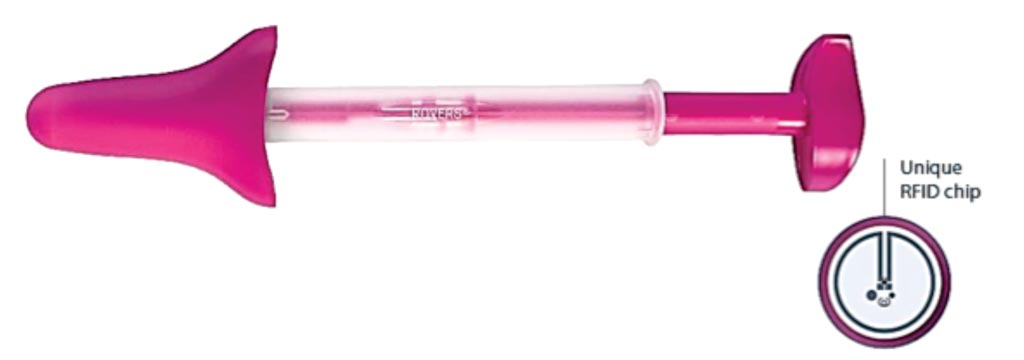Accuracy of Self-Sampling for HPV Screening Evaluated
By LabMedica International staff writers
Posted on 13 Feb 2019
Molecular testing for human papillomavirus (HPV) using patient-collected cervico-vaginal samples has shown similar levels of accuracy to testing done on clinician-collected samples and could boost participation in overall HPV screening.Posted on 13 Feb 2019
Detecting cancer lesions in women who periodically attend clinics can be more difficult than detecting them in underscreened women who have rarely or never been screened, or have refused to attend clinics following an invitation from a screening organization.

Image: An Evalyn Brush used for patient self-sampling of the cervico-vaginal area (Photo courtesy of Rovers Medical Devices).
Scientists at the Vrije Universiteit (Amsterdam, the Netherlands) examined 7,643 women aged 29 to 61 years in a self-sampling group and 6,282 in a clinician-collected sampling group. The primary endpoints of the study were detection of cervical intraepithelial neoplasia of grade 2 and worse or grade 3 and worse (CIN2+ or CIN3+). The women were requested to collect their own cervicovaginal sample using an Evalyn Brush; or a clinician-based sampling group, in which samples were collected by a general practitioner with a Cervex-Brush also from Rovers Medical Devices BV.
All samples were tested for HPV using the clinically validated GP5+/6+ PCR enzyme immunoassay. HPV-positive women in both groups were retested with the other collection method and triaged by cytology and repeat cytology in accordance with current Dutch screening guidelines. Of the self-collecting patients, 569, or 7.4%, tested positive for HPV, while in the physician-collected group, 451, or 7.2% tested positive. The CIN2+ sensitivity and specificity of HPV testing did not differ between the two groups, while CIN3+ relative sensitivity was 0.99 with essentially equivalent specificity.
The authors concluded that HPV testing done with a clinically validated PCR-based assay had similar accuracy on self-collected and clinician-collected samples in terms of the detection of CIN2+ or CIN3+ lesions. These findings suggest that HPV self-sampling could be used as a primary. Johannes Berkhof, PhD, a professor and a co-author of the study, said, “"Self-collection has potential to become a first screening test in many different countries. It creates a high participation rate, which is difficult to achieve. We have cleared the first hurdle, but now we need to see how we can implement this kind of screening.” The study was published on January 15, 2019, in the journal Lancet Oncology.
Related Links:
Vrije Universiteit




 assay.jpg)







